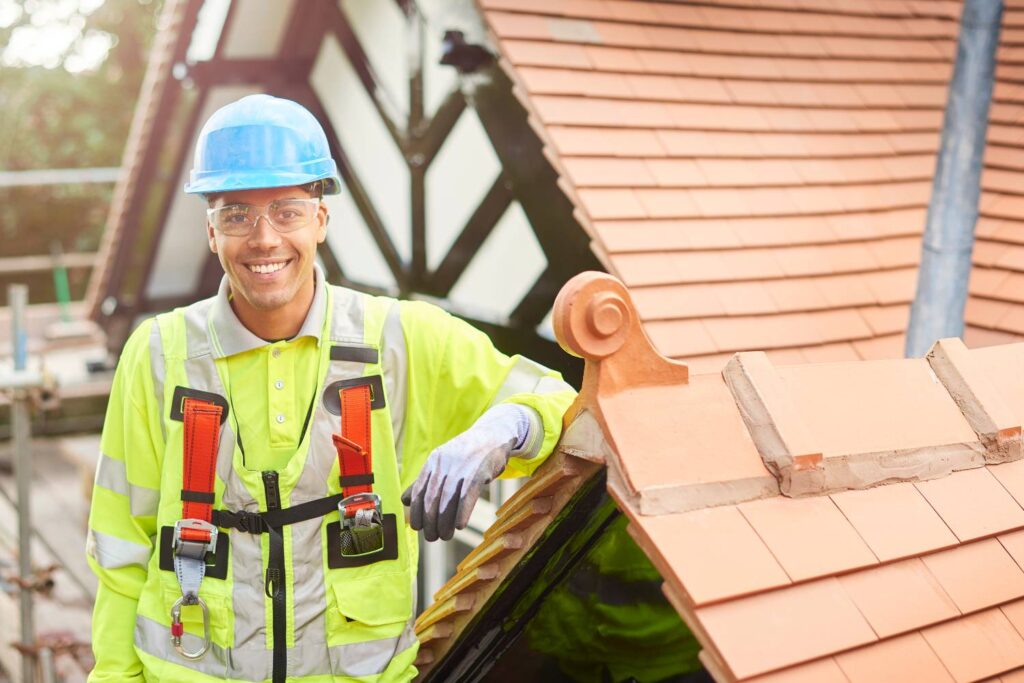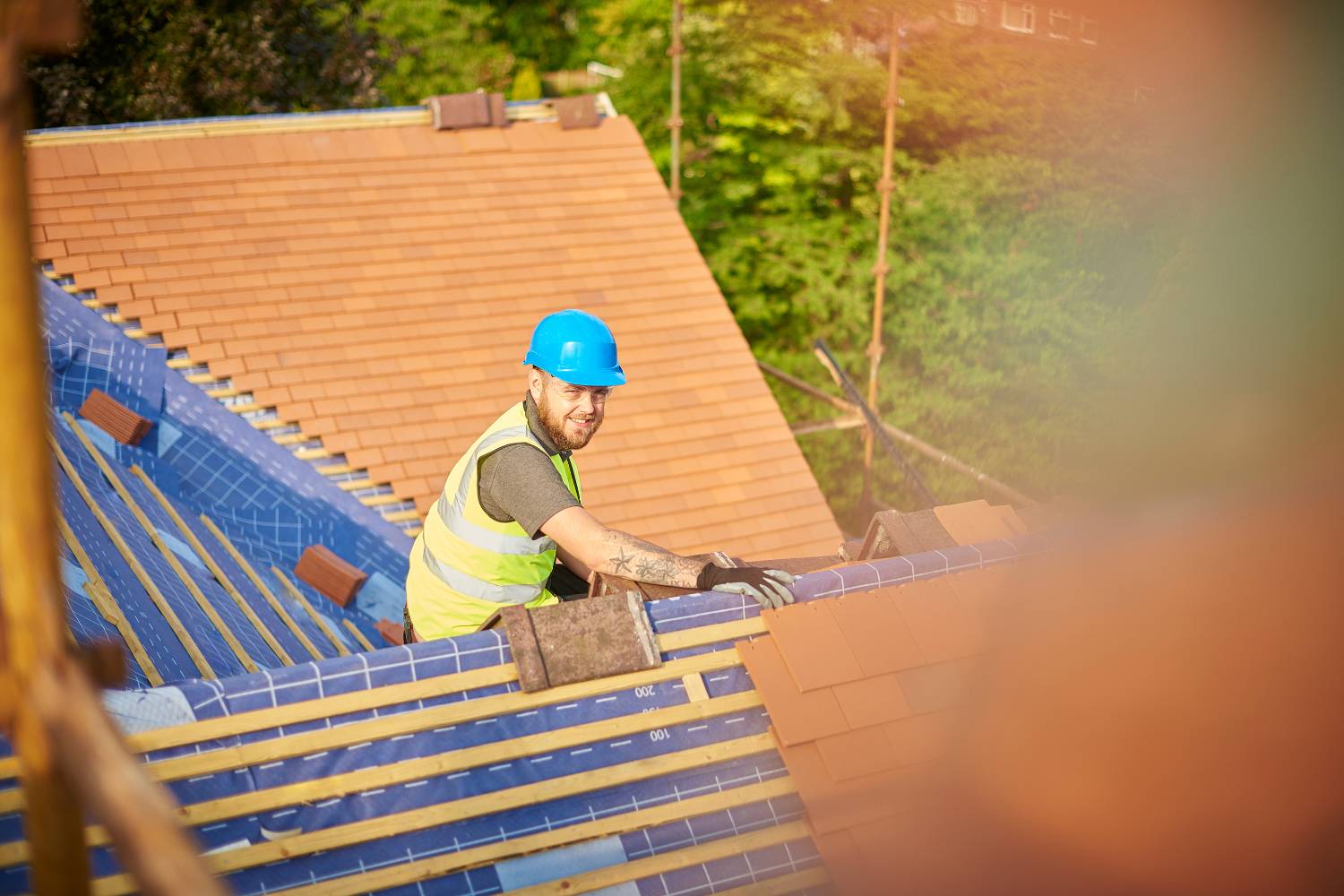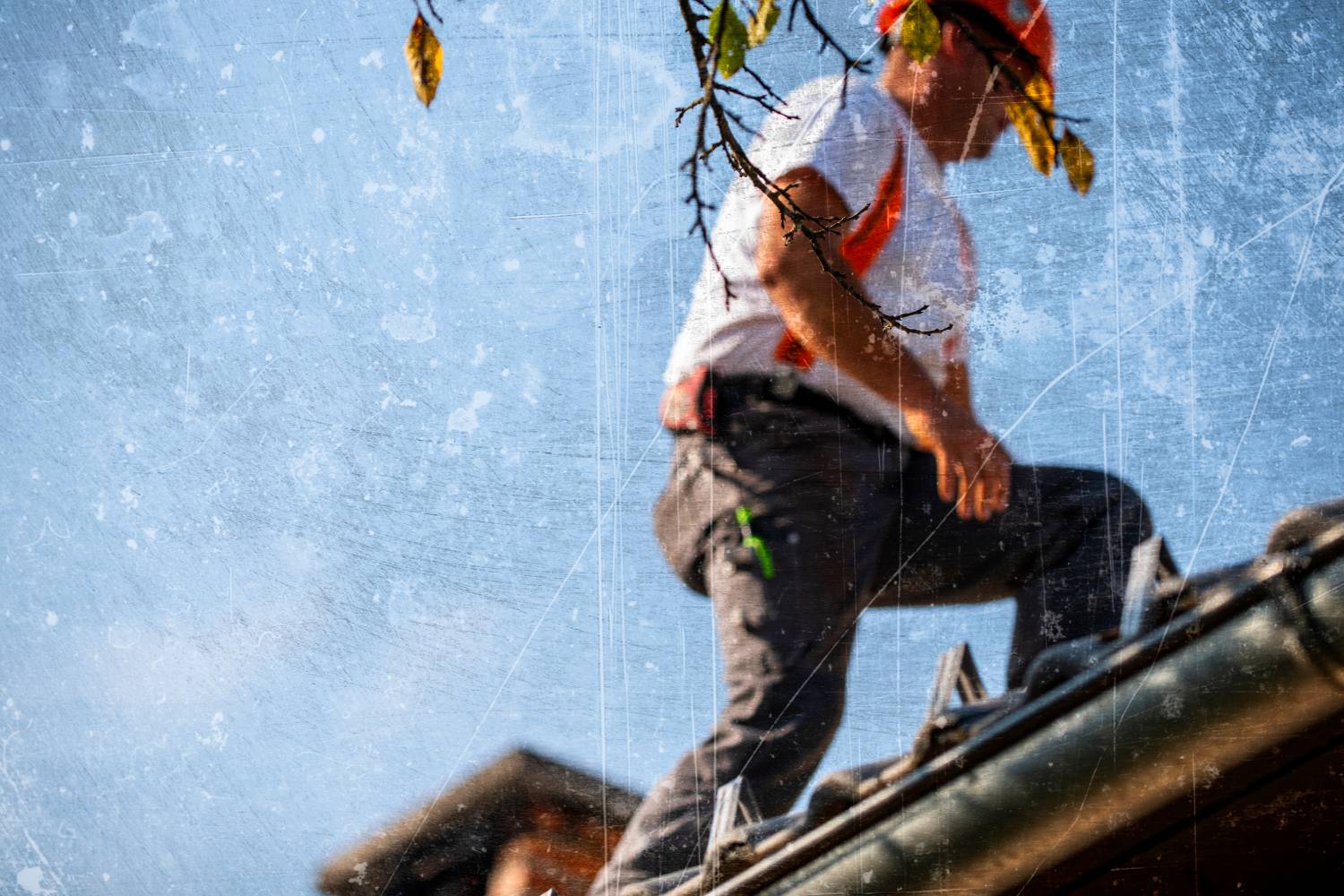Understanding the intricacies of roof restoration warranties is essential for homeowners looking to protect their investments. In this blog, we'll explore the different types of warranties available, their coverage, and how to make the most of them.
From standard manufacturer’s warranties to contractor workmanship warranties and extended manufacturer’s warranties, we’ll break down what you can expect, how to maintain these warranties, and the steps to take if you need to file a claim.
Whether you're a new homeowner or considering a roof restoration, this guide will help you navigate the often complex world of roofing warranties, ensuring your investment is safeguarded for years to come.
What Are The Common Types Of Roof Restoration Warranties?
Investing in a new roof is a significant financial decision, and understanding the various types of warranties available can ensure that your investment is well-protected. Roof warranties come in three main types: standard manufacturer’s warranties, contractor workmanship warranties, and extended manufacturer’s warranties. Here’s a breakdown of each:
Standard Manufacturer’s Warranty
- Coverage: This warranty covers the roofing materials themselves, protecting against defects in the shingles.
- Duration: Typically, it offers a limited lifetime coverage, meaning as long as you own your home.
- Scope: Covers the cost of replacing defective shingles within an initial period, often including labour costs for installation but not tear-off and disposal.
- Limitations: It does not cover issues arising from installation errors or damage from other components like underlayment, flashing, or ventilation.
Contractor Workmanship Warranty
- Coverage: Protects against installation errors made by the contractor.
- Duration: The length can vary significantly from contractor to contractor, ranging from a few years to a lifetime.
- Scope: Typically covers the cost of labour and materials needed to fix any installation-related issues. It may also cover related damages to the home’s interior and personal belongings.
- Limitations: Excludes damage from natural disasters, alterations post-installation, and issues caused by foot traffic or falling debris.
Extended Manufacturer’s Warranty
- Coverage: Offers comprehensive protection that includes both the roofing materials and the installation workmanship.
- Duration: Can extend up to 50 years, often with non-prorated coverage for a significant period.
- Scope: The entire roofing system must be installed by a certified contractor and includes additional components such as underlayment, ventilation, and more. This warranty covers labour, tear-off, and disposal costs for defective materials.
- Benefits: Provides a high level of peace of mind and is particularly valuable when selling a home, as it can be transferred to the new owner.
How Long Do Roof Restoration Warranties Typically Last?
Understanding the length and terms of roof restoration warranties is crucial for homeowners looking to protect their investment. Roof warranties vary widely in terms of duration and coverage, depending on factors like the type of materials used and the quality of installation. This comprehensive look into the typical durations and key aspects of roof restoration warranties provides valuable insights for making informed decisions.
Factors Influencing Warranty Length
Several factors influence the length of a roof warranty. The quality of the roofing materials plays a significant role, with higher-quality materials often coming with longer warranties. Proper installation practices by certified contractors can also extend warranty periods.
Regular inspections and maintenance are typically required to keep the warranty valid. Additionally, local climate conditions, such as extreme weather, can affect both the longevity of the roof and the terms of the warranty.
Typical Warranty Durations
The duration of roofing warranties varies depending on the type of material used. Asphalt shingles generally come with warranties of 20 to 30 years, with premium options extending up to 50 years. Metal roofs can have warranties lasting up to 50 years, often with extended warranties available. Wood shingles and shakes typically have warranties of around 20 to 30 years. Slate and tile roofs, known for their durability, often come with warranties of 50 years or more.
Protecting Your Roof Warranty
To protect your roof warranty, it is important to follow several key steps. Regular inspections by a certified contractor are often required to maintain the warranty. Sticking with your original contractor for inspections and repairs can prevent voiding the warranty.
Ensuring that you register your warranty with the manufacturer within the specified time frame is crucial. Additionally, understanding and adhering to all the terms and conditions outlined in the fine print will help avoid accidentally voiding the warranty.
Benefits of Understanding Warranty Lengths
Understanding the length of roofing warranties provides numerous benefits. It helps homeowners make informed decisions when choosing roofing materials and contractors, ensuring they select options that offer adequate protection.
Knowing the warranty details can also help in planning and preventing unexpected expenses in the future. Moreover, having a clear understanding of the warranty terms provides peace of mind, knowing that the investment is protected and there is recourse in case of defects or failures.
Choosing a Contractor with a Long-Term Warranty
When selecting a roofing contractor, it is important to ensure they are certified by the manufacturer of your roofing materials. A contractor with a solid reputation and positive reviews is more likely to offer reliable services and comprehensive warranties. Look for contractors who provide extensive warranties that cover both materials and workmanship, as this can offer long-term benefits and greater peace of mind.
What Does A Roof Restoration Warranty Cover?
Investing in a new roof is a significant financial decision, and understanding what a roof restoration warranty covers is crucial to ensure that your investment is well-protected. Here’s an in-depth look at the different types of warranties, their coverage, and what homeowners need to know to make informed decisions.
Importance of Roofing Warranties
Roofing warranties are essential for protecting your investment and providing peace of mind. They ensure that you are covered in case of material defects or installation errors, thereby safeguarding your financial investment. A robust warranty covers unexpected costs for repairs or replacements, ensuring that your investment in the roof is secure. Furthermore, a transferable warranty can increase the resale value of your home, making it more attractive to potential buyers.
Warranties also serve to mitigate risks by guaranteeing that both materials and workmanship meet high standards. While most warranties exclude certain types of damages, they still provide coverage for a wide range of potential issues, thus reducing the financial burden on homeowners. The long-term assurance provided by these warranties reduces stress and worry about future roofing problems, allowing homeowners to enjoy peace of mind.
What Voids Roofing Warranties?
Understanding what can void your roofing warranty is crucial to maintaining its validity. Common reasons for voiding a warranty include improper maintenance, unauthorised repairs, and non-compliance with the terms and conditions of the warranty.
For example, failing to perform regular maintenance can result in the warranty being voided. Similarly, having repairs done by a contractor who is not certified by the manufacturer can invalidate the warranty. Additionally, not registering the warranty or failing to adhere to the specific conditions outlined in the warranty terms can lead to it being voided.
How to Protect Your Roofing Warranty
To ensure your roofing warranty remains valid, it is important to follow several key steps. First, schedule regular inspections to catch and address any issues early. This proactive approach helps maintain the integrity of your roof and ensures that any problems are identified and resolved before they become major issues. Second, stay with the original contractor for repairs and maintenance to avoid voiding the warranty. Using the same contractor ensures continuity and accountability for the work done.
Third, make sure to register your warranty with the manufacturer as required. Failure to do so can result in a lack of coverage when you need it most. Finally, read the fine print of the warranty to understand all the terms and conditions, thereby avoiding any actions that might inadvertently void the warranty.
How Do I File A Claim Under My Roof Restoration Warranty?
Filing a claim under your roof restoration warranty can seem daunting, but understanding the process can help ensure that your claim is handled smoothly and efficiently. Here is a step-by-step guide to help you through the process, from assessing the damage to finalising the repairs.
Review Your Insurance Policy
The first step in filing a roof claim is to thoroughly review your insurance policy. Understand the types of damage covered, such as those caused by falling objects, fire, hail, lightning, smoke, ice and snow weight, wind, and vandalism.
Inspect Your Roof
Conduct a thorough inspection of your roof to assess the damage. This involves walking around your home and looking for visible signs of damage, such as missing shingles, bare patches, and other indications of wear. Additionally, inspect the interior of your home for signs of water damage. Document all visible damage with photographs or videos to support your claim.
Get an Independent Inspection
Contact a trusted roofing contractor for a professional inspection. Many roofers offer free inspections, especially after significant weather events. A professional roofer can identify underlying issues that may not be immediately visible and provide a detailed report of the damage. This report can be crucial when discussing your claim with your insurance company.
Make Temporary Repairs
If your roof is severely damaged, make temporary repairs to prevent further damage. Use tarps or other materials to cover exposed areas. Keep all receipts for materials used in temporary repairs, as these expenses can be included in your insurance claim.
Contact Your Insurance Company
Once you've assessed the damage and decided to file a claim, contact your insurance company. Provide them with detailed information about the damage, including the documentation you’ve collected. You can usually file a claim over the phone or online. After filing, you will receive a claim number and an insurance adjuster will be assigned to inspect the damage.
Meet with the Insurance Adjuster
The insurance adjuster will visit your home to evaluate the damage. It's advisable to have your roofing contractor present during the adjuster's inspection to ensure all damage is accounted for. The contractor can help advocate for the necessary repairs and provide a professional estimate that can be compared to the adjuster's findings.
Review the Estimate and Scope of Work
After the adjuster's visit, review the scope of work and the insurance company’s estimate for repairs. Compare this estimate with the one provided by your contractor to ensure it covers all necessary repairs. Discuss any discrepancies with your insurance company and advocate for a fair settlement based on your contractor’s assessment.
Clarify Payment Procedures
Understand the payment procedures for your claim. If you have a mortgage, the insurance check may be made out to both you and the mortgage company. In some cases, multiple checks may be issued throughout the repair process. Ensure you are clear on how and when payments will be made.
Schedule the Repairs
Once your claim is approved and you have received the initial payment, schedule the repairs with your contractor. It’s important to complete the repairs promptly to prevent further damage and ensure your home is protected.
Finalise the Project
After the repairs are completed to your satisfaction, contact your insurance company and mortgage company (if applicable) to finalise any remaining paperwork. Ensure you have all relevant documents, including warranties, service contracts, and receipts for the repairs. Make the final payment to your contractor and enjoy the peace of mind that comes with knowing your roof is restored and protected.
Are Roof Restoration Warranties Transferable To New Owners?
When investing in a new roof or selling your home, understanding the transferability of your roof restoration warranty is crucial. A transferable warranty can significantly enhance your property's value and provide peace of mind to potential buyers. Here's an in-depth look at whether roof restoration warranties can be transferred to new owners and what you need to know.
Understanding Roof Warranty Transferability
Roof restoration warranties generally fall into two main categories: manufacturer's material warranties and contractor's workmanship warranties. Both can be transferable, but the terms and conditions can vary significantly.
Manufacturer’s Material Warranty
Manufacturer's material warranties cover defects in the roofing materials. These warranties can last anywhere from 25 to 50 years or even the lifetime of the roof. The transferability of these warranties depends on the manufacturer. Most manufacturers allow a one-time transfer, meaning the warranty can be transferred to the new owner if you sell your home. However, subsequent transfers are typically not allowed.
Contractor’s Workmanship Warranty
Contractor's workmanship warranties cover the quality of the installation. These warranties can range from 2 to 25 years or more. Like material warranties, workmanship warranties are often transferable, but this also depends on the contractor. Some contractors tie the warranty to the address rather than the homeowner, allowing it to transfer automatically when the property changes hands.
Benefits of a Transferable Roof Warranty
A transferable roof warranty is a valuable asset when selling your home. It provides potential buyers with peace of mind knowing that the roof is protected against defects and installation errors. This added assurance can make your property more attractive and potentially increase its resale value.
Steps to Transfer a Roof Warranty
If your roof warranty is transferable, follow these steps to ensure a smooth transition:
- Read the Warranty: Carefully review the terms and conditions to understand the transferability clauses.
- Contact the Manufacturer or Contractor: Confirm the transfer process with the warranty issuer.
- Complete the Transfer Form: Fill out any required forms and provide proof of ownership transfer.
- Pay Any Fees: Some warranties may require a transfer fee.
- Provide Documentation to New Owners: Ensure the new homeowners have all necessary documentation and understand the warranty terms.
Conclusion
Navigating the complexities of roof restoration warranties is crucial for safeguarding your investment. By understanding the different types of warranties available, their specific coverages, and the steps required to maintain and file claims, homeowners can ensure their roofs are well-protected.
Knowing the typical durations and conditions of these warranties, and the factors that can influence them, helps in making informed decisions about materials and contractors. Additionally, being aware of what can void a warranty and how to protect it ensures long-term security and peace of mind.
For those looking to sell their home, transferable warranties can add significant value, offering reassurance to potential buyers. Armed with this comprehensive knowledge, you can confidently manage your roof restoration project, ensuring it stands the test of time and weather.
Frequently Asked Questions
A guarantee is a promise made by the contractor about the quality and performance of their work, often stating that any issues within a specific period will be fixed at no cost. A warranty, on the other hand, is usually a formal written agreement provided by the manufacturer of roofing materials, covering defects or failures of the materials themselves for a specified time. In roof restoration, both can be provided to give homeowners peace of mind about the workmanship and the materials used.
The duration of guarantees and warranties can vary. Contractors' guarantees on workmanship typically range from 5 to 10 years, depending on the company and the scope of work. Manufacturer warranties on roofing materials can range from 10 to 50 years or more, depending on the material and the manufacturer. It's essential to understand the terms and duration of both the guarantee and the warranty before starting a roof restoration project.
A workmanship guarantee typically covers issues arising from the installation or restoration process, such as leaks, poor alignment, or improper sealing. If these issues occur within the guarantee period, the contractor should rectify them at no additional cost. However, it usually does not cover damage caused by external factors like severe weather, accidents, or homeowner negligence.
To ensure your guarantee and warranty remain valid, follow these steps:
- Regular Maintenance: Perform regular roof inspections and maintenance as recommended by the contractor and manufacturer.
- Prompt Repairs: Address any minor issues or damages promptly to prevent them from worsening.
- Keep Records: Maintain records of all inspections, maintenance, and repairs conducted.
- Authorised Work: Ensure that any repairs or modifications are performed by authorised professionals.
- Compliance: Follow any specific guidelines or conditions outlined in the guarantee and warranty documents.
Yes, both warranties and guarantees often come with exclusions and limitations. Common exclusions include damage from natural disasters (e.g., hailstorms, hurricanes), improper maintenance, unauthorised repairs, and normal wear and tear. It's crucial to read the fine print and understand what is and isn't covered to avoid surprises. Additionally, some warranties might be voided if the roof is altered or repaired by an unauthorised party.


